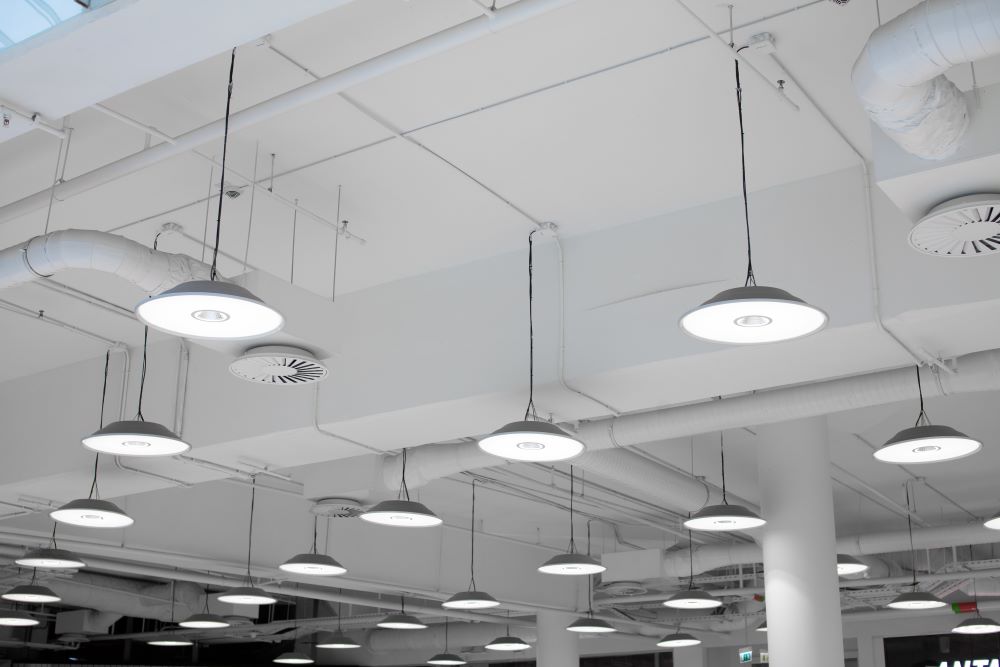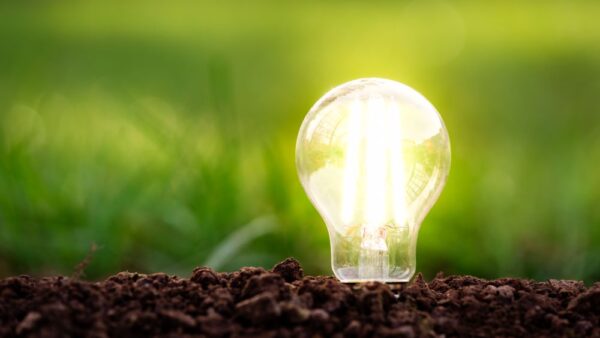Among men and women of a certain generation, discussions of an “energy crisis” bring to mind images of long lines of cars waiting to purchase gasoline during the days of the Arab oil embargo in the 1970’s. The new energy crisis of the early part of the 21st century does not include such dramatic imagery, but it does have the potential to be an even greater problem if the world’s population continues to burn fossil fuels at the current rates and to pump greater amounts of carbon emissions into the atmosphere. To the extent that any cause-and-effect relationship between carbon emissions and future environmental problems is creating a new energy crisis, efficient LED lighting has the potential to take a large bite out of America’s and the world’s energy consumption and to reduce the overall carbon footprint created by artificial illumination and LED Lighting is Solving America’s Crisis.
LED Lighting and America’s Energy Consumption
One of the central elements of the new energy crisis is the inefficient consumption of electricity that is generated by coal-burning and other fossil-fuel driven power plants. Traditional artificial lighting converts approximately 10% of electrical energy input into light and wastes the remainder as excess heat. The United State Department of Energy estimates that switching from those traditional lighting sources to solid state LED lighting would reduce annual carbon emissions in the U.S. by more than 180 million metric tons over the next ten to fifteen years. To put this reduction into perspective, this transition would have the same effect as removing more than 38 million passenger automobiles from the country’s roadways. This conversion would not only substantially reduce greenhouse gas emissions, but it would also preserve fossil fuel resources for other uses until newer and cleaner energy sources are developed. The U.S. Congress has granted its imprimatur on these estimates with its mandate in the Energy Policy Act of 2005 for individuals and industry to adopt solid state lighting technology at a more rapid rate.
The conversion to LED lighting as a solution to the current energy crisis is not confined to the United States. Pakistan, for example, is facing an energy generation shortage of approximately 8,000 megawatts. Based on the objective reality that LED lights consume 50% less electrical energy than other artificial lighting sources, Pakistani authorities estimate that their country could save up to 5,000 megawatts simply by switching to LED lighting. That switch will also reduce the use of hazardous materials, including mercury vapor and other gases, that are incorporated into older lighting technologies.
The benefits of LED lighting are not limited to solving the modern energy crisis. With their improved efficiency and durability, LED’s help businesses and individuals to save money, and those savings can then be reallocated to more productive purposes. With no hazardous material usage in their production, LED lights reduce waste disposal problems at landfills. They also produce higher-quality light that facilitates more versatile and more easily-controlled lighting designs.
How LED Lighting is Solving America’s Energy Crisis
As the United States faces the challenges of an energy crisis, the search for efficient and sustainable solutions becomes increasingly critical. LED lighting has emerged as a game-changer in the realm of lighting technology, offering significant energy savings and addressing the pressing need for reduced energy consumption. Let’s see how LED lighting is solving America’s energy crisis and changing the way we illuminate our homes, businesses, and public spaces.
Energy Efficiency: A Key to Sustainable Lighting
At the heart of LED lighting’s impact is its exceptional energy efficiency. LED (Light Emitting Diode) technology converts a greater portion of electricity into visible light compared to traditional lighting systems. This efficiency results in substantial energy savings, as LED lights require less power to produce the same level of brightness as their incandescent or fluorescent counterparts. By replacing outdated lighting with energy-efficient LEDs, America can significantly reduce its overall energy consumption.
Reduced Energy Demand and Reliance on Fossil Fuels
The widespread adoption of LED lighting translates into a significant reduction in energy demand, thereby easing the strain on power grids. Traditional lighting technologies, such as incandescent bulbs, are notorious for their energy inefficiency, with a substantial portion of the electricity consumed being wasted as heat. In contrast, LED lights convert almost all of the energy they consume into usable light, minimizing wastage and conserving energy resources. By embracing LED lighting, America can reduce its reliance on fossil fuels, decrease carbon emissions, and move towards a greener and more sustainable future.
Longevity and Durability: A Long-Term Solution
LED lighting offers a long-term solution to America’s energy crisis due to its impressive lifespan and durability. LED lights typically last significantly longer than traditional lighting, with lifespans ranging from 25,000 to 50,000 hours or more. This extended lifespan minimizes the need for frequent replacements, reducing waste and associated costs. LED lights are also more durable and resistant to shocks, vibrations, and temperature fluctuations, making them ideal for various environments, including outdoor and industrial applications. The longevity and reliability of LED lighting ensure continuous energy savings and contribute to a more sustainable lighting infrastructure.
Smart Lighting and Energy Management Systems
The advent of smart lighting technology has further enhanced the energy-saving potential of LED lighting. Smart LED systems integrate with advanced controls, sensors, and automation features, allowing precise management of lighting levels and schedules based on occupancy, daylight availability, and user preferences. These intelligent lighting systems optimize energy consumption by providing light only where and when needed, further reducing waste and unnecessary energy expenditure. Smart LED lighting solutions offer unprecedented control, customization, and efficiency, making them an integral part of America’s energy-saving efforts.
Economic Benefits and Job Creation
LED lighting not only addresses America’s energy crisis but also brings economic advantages. The widespread adoption of LED technology stimulates the economy through job creation and investment in research and development. LED lighting companies continue to innovate and expand, creating employment opportunities in manufacturing, installation, and maintenance of LED lighting systems. As the demand for energy-efficient lighting grows, the LED industry supports local economies and fosters sustainable growth.
LED lighting is revolutionizing America’s approach to energy consumption by offering an efficient, long-lasting, and sustainable lighting solution. Through its energy-saving capabilities, reduced reliance on fossil fuels, and integration with smart lighting systems, LED lighting is playing a significant role in solving the nation’s energy crisis. By embracing LED technology on a large scale, America can pave the way for a brighter, more sustainable future, reducing energy consumption, minimizing environmental impact, and creating a greener society for generations to come.






